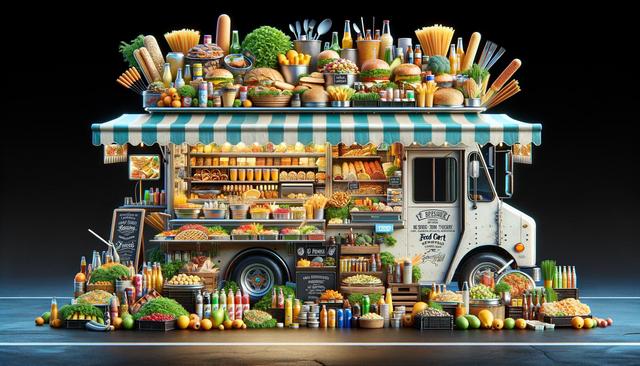
Exploring the Vibrant World of Food Carts
The Rise of Mobile Cuisine
In recent years, food carts have become a staple in cities around the world. These compact, mobile kitchens offer a unique alternative to traditional dining establishments, often bringing gourmet-quality meals to the streets. The appeal lies in their convenience and affordability, making them a favorite among students, workers, and tourists alike. From early morning breakfast burritos to late-night snacks, food carts cater to a wide range of cravings and schedules.
One major factor contributing to the rise of food carts is the lower startup cost compared to brick-and-mortar restaurants. This has enabled many aspiring chefs and entrepreneurs to enter the food industry with fewer financial risks. In turn, this has led to greater innovation and diversity in the types of cuisine available. Whether it’s fusion dishes or traditional recipes passed down generations, food carts continue to surprise and delight diners with new flavors.
Global Flavors on Local Streets
Food carts often serve as a gateway to global cuisine. A single city block might feature carts offering Mexican tacos, Thai noodles, Middle Eastern falafel, and Indian curries—all within walking distance. This culinary variety not only enriches the local food scene but also offers diners the opportunity to explore international dishes without the need for expensive travel.
These mobile eateries also play a role in cultural exchange. Many food cart operators draw from their heritage to create authentic dishes, sharing stories and traditions through food. It’s not uncommon for regular customers to form personal connections with cart owners, learning more about the culture behind each meal. This sense of community and shared experience is a hallmark of the food cart phenomenon.
- Authentic, home-style recipes
- Cultural storytelling through cuisine
- Opportunities to try new and unfamiliar foods
Economic Impact and Opportunities
Beyond their culinary contributions, food carts also have a significant economic impact. They create jobs not just for cart owners, but also for suppliers, maintenance providers, and local farmers. In many cities, food carts are part of broader economic development plans aimed at revitalizing neighborhoods and promoting small business growth.
For many vendors, operating a food cart is a stepping stone to bigger ventures. Some go on to open restaurants or expand into multiple carts. Municipalities have also begun to recognize the benefits, offering support through permits, training programs, and designated vending zones. These efforts help legitimize the industry and ensure food safety and quality standards are met.
Challenges Faced by Operators
Despite their popularity, running a food cart comes with its share of challenges. Weather conditions can greatly affect daily operations, with rain or extreme heat deterring customers. Space limitations also constrain the types of equipment and menu items that can be offered. Additionally, navigating local regulations and securing permits can be time-consuming and complex.
Operators must also handle logistics such as sourcing ingredients, managing waste, and maintaining food safety. Many work long hours, starting early in the morning to prep and staying late into the night for cleanup. Yet, the passion for food and customer interaction often outweighs these difficulties, driving many to persevere and succeed in the competitive street food landscape.
- Weather dependency
- Limited space and storage
- Regulatory hurdles
Trends Shaping the Future of Food Carts
The food cart industry continues to evolve, influenced by changing consumer preferences and technological advancements. One noticeable trend is the growing demand for healthier, plant-based options. Many vendors now offer vegetarian or vegan alternatives, as well as gluten-free and low-sugar dishes to cater to health-conscious customers.
Technology also plays a role, with mobile ordering apps and digital payment systems becoming standard. Social media platforms help vendors build a following and promote daily specials or location updates. Sustainability is another emerging focus, with eco-friendly packaging and locally sourced ingredients gaining popularity among both vendors and patrons.
- Health-oriented menu options
- Digital engagement and mobile payments
- Eco-conscious business practices
Conclusion: Why Food Carts Matter
Food carts are much more than a quick meal option—they represent innovation, cultural diversity, and entrepreneurial spirit. For diners, they offer a chance to explore flavors from around the world without leaving their city. For operators, they provide a platform to share their passion and build a business. As cities continue to embrace street food culture, food carts will likely remain a dynamic and integral part of the urban food scene. Whether you’re a curious foodie or an aspiring vendor, the world of food carts has something meaningful to offer.

